Let's Talk
We would love to hear from you. Want to know more about our services or have any questions? Say Hi!
Shopify vs WooCommerce: What to pick for your online store in 2025?
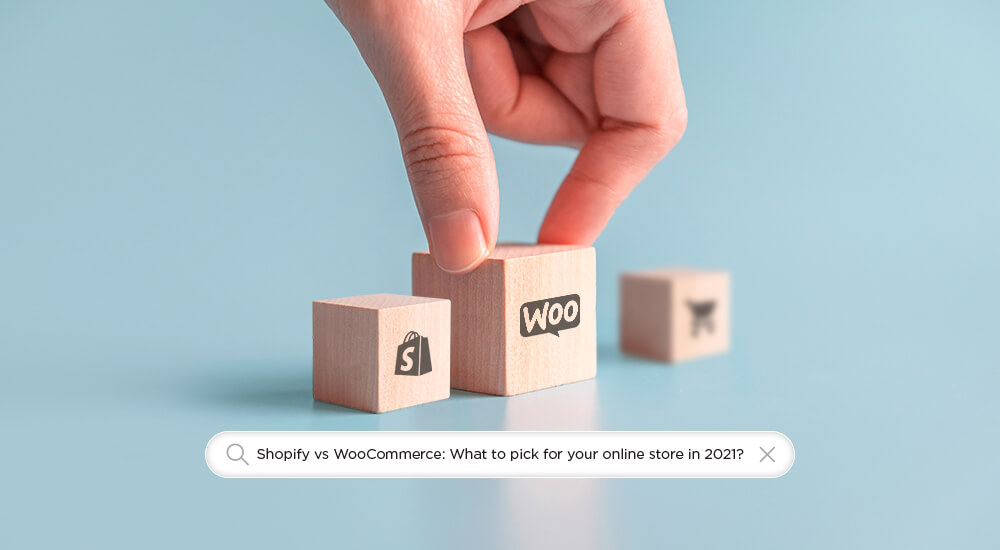
In 2021, the landscape is changing. A lot has changed in the E-commerce world over the last few years. One of the most significant changes is that Shopify and WooCommerce have evolved to offer their customers more features. So which is better? In this blog post, we’ll be discussing which platform is best for your business: Shopify or WooCommerce? Both have their pros and cons that will affect different businesses differently.
What is Shopify?
Shopify is a Canadian E-commerce company founded in 2004. They offer an online and offline platform for businesses to sell their products or services through third-party apps like themes, marketing, payment processing, etc.
Their software enables small businesses to easily build an online store, from design to payment processing and inventory management.
This platform also allows customers to purchase products on your site via mobile app or desktop device by using Shopify’s credit card reader, SwipeStox integration, etc. This means no more time spent printing out order forms!
What is WooCommerce?
WooCommerce is a free E-commerce plugin for WordPress. It helps individuals and small businesses set up their online stores in minutes, with no technical knowledge needed.
It’s easy to customise your site, add product options such as size or colour, create coupons and promo codes that encourage people to buy more than one of something; it also has built-in compatibility with popular payment gateways like PayPal Standard, Stripe, etc.
The WooCommerce platform comes bundled with all necessary features, including email marketing integration (for orders), an affiliate program for marketers who send customers from their sites over yours automatically get a commission on the sale without requiring any work on your end – both simple tools make running an online store significantly easier!
Shopify vs WooCommerce – A detailed review
In this section, we shall take a look at how Shopify and WooCommerce stand on specific requirements and which is better suited for your needs.
Pricing Plans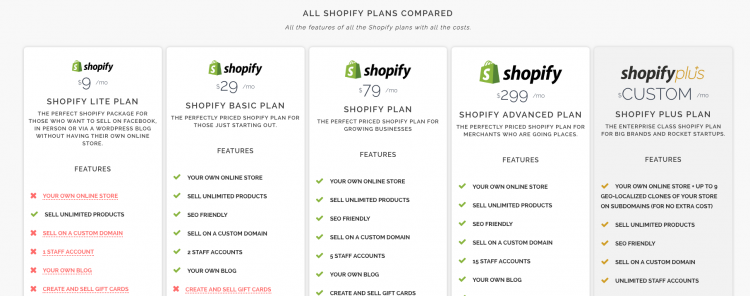
Shopify’s basic plan starts at $29 per month, and you can upgrade to the $79 plan and the Advanced plan for $299 per month.
Furthermore, Shopify offers its own Shopify payments solution, which costs 2.9%+30 cents per transaction.
WooCommerce, on the other hand, is open-source and freely available as a WordPress plugin.
For those who want extra features such as their own hosted checkout page or more advanced features like affiliate marketing programs and coupons/promos codes, they can sign up for WooCommerce’s paid plans that range from $15-$299 per month. A benefit of using WooCommerce is that you can easily find free alternatives to paid extensions.
Winner: Shopify and WooCommerce tie. One costs more than the other, but both have their pricing plans to suit different needs.
Supports Multiple Languages
Shopify’s templates are designed for English-speaking customers while offering a translation service if you’re not in the US or Canada. They also allow their users to create their theme if desired.
Shopify, however, offers different language options and translations for countries in Europe like Sweden or Germany.
WooCommerce’s interface is a bit clunky at first, but the plugin itself can be translated into any language you want! However, there are not as many themes that match your chosen locale.
Winner: Shopify is more versatile and can be translated into different languages.
Payment Gateways Available
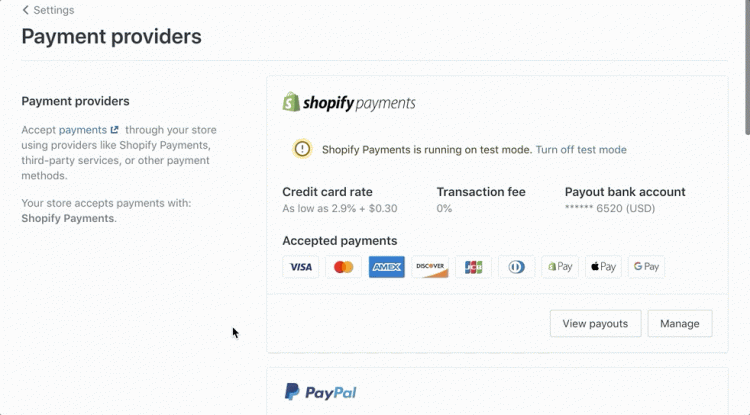
Shopify offers a wide array of payment gateways such as Stripe, Apple Pay, etc.
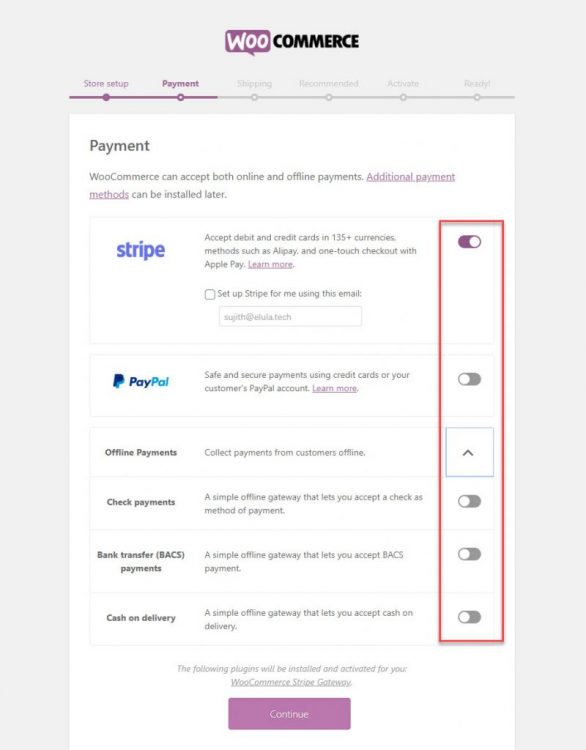
WooCommerce has PayPal Standard and the option to use their own custom checkout page, which allows you to specify your gateway. Some customers have reported difficulty in getting PayPal to work with WooCommerce.
Winner: Shopify has more payment gateways, but it’s also a paid service.
Can you host your own website?
Shopify does not allow customers to self-host their store on a different domain or server than the one they provided; however, they will provide the URL for your store.
WooCommerce allows you to “Self-Host” and offer assistance with any technical difficulties you might have during this process.
Winner: WooCommerce gives customers more freedom to host their website if they choose to do so on a different domain or server than what Shopify offers.
Can you design your own store?
Shopify has a variety of templates and designs to choose from. It also offers the ability for customers to create their theme if they do not like any of those provided by Shopify or would prefer something more unique.
WooCommerce does not offer this option because WooCommerce is an open-source plugin that is freely available for WordPress.
Winner: Shopify has more design options and the ability to create your theme if you do not like their default ones or want something unique that’s not a template offered by them.
Offers an affiliate program
Shopify offers a simple option where they can integrate with an existing affiliate program of your choice. WooCommerce, however, does not offer an option for an affiliate program, and you’ll have to manually create one by yourself.
Winner: Shopify offers a simple way to integrate with any preexisting affiliate program you might already use or want to use in the future.
Can sell physical and digital products
Shopify does not offer the option to sell physical products with their plan. You have two options: either you can go for a paid Shopify Plus or WorkSpace subscription and use this as your storefront OR create an extension like Product Options, Wholesale Pricing, etc., that will allow you to add these features.
WooCommerce offers the option to sell both physical and digital products.
Winner: WooCommerce offers a website and allows customers to sell their products physically by allowing them to create extensions for Shopify that will enable this feature.
In-app purchases?
Shopify does not offer in-app purchases while WooCommerce does – even though you’ll have to manually integrate this feature yourself. However, third-party apps can simplify the process if your website begins generating large amounts of revenue. You will also be required by law to provide certain information for your customers before the purchase is finalised, like the price of goods and the total amount they will be charged.
Winner: WooCommerce as it offers in-app purchases which are not available with Shopify – even though this feature might have to be manually integrated by yourself if you run a website generating large amounts of revenue.
Dropshipping
Shopify does not offer drop shipping while WooCommerce does. However, there’s one catch here when using Dropzoom extension: unless you’re doing business from the USA or Canada only, then you’ll need to set up a separate shop on another platform (eBay, Amazon, etc.) where people can buy products and ship them directly into their customers’ hands without any intermediate steps. This means storage and shipping costs that are not included with the extension.
Winner: WooCommerce as it offers drop shipping which is unavailable from Shopify
Custom domains
Shopify requires that you buy their domain for people to reach your site via custom URL, while WooCommerce has an option where you can have both of them at once and redirect one URL to other automatically, so they do match. Winner: WooCommerce allows users to access any page within their website without first visiting the default web page or using a different address like subdomain.com/page-name/. They also offer the option of having both domains at once and automatically redirecting one URL to the other, so they do match.
Customer Support
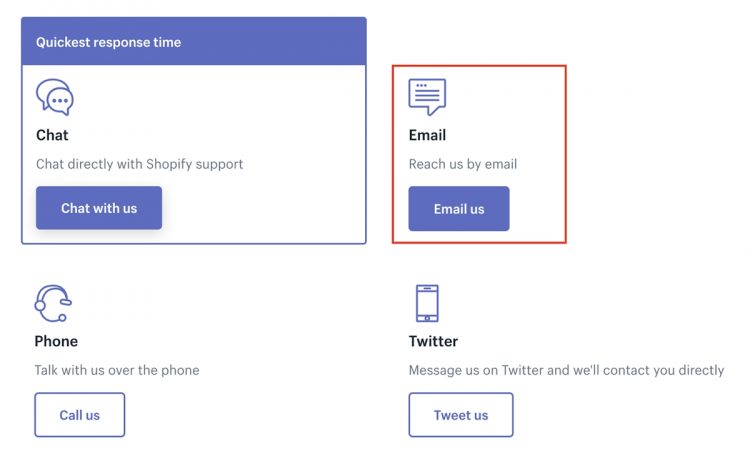
Shopify offers both chat and email support, while WooCommerce is only available via the latter option.
Winner: Shopify for offering a more diverse customer service that includes live chats with representatives as well as an opportunity to send them an email at any time of day or night.
The Final Verdict: Shopify vs. WooCommerce
Shopify is an excellent option if you wish to build an online store with your domain name and need minimal customisation. You can also sell both digital and physical products on the site. However, features like in-app purchases are unavailable for you unless you upgrade to the paid Shopify Plus or WorkSpace subscription.
WooCommerce is perfect for people looking into building their website from scratch while still integrating third-party extensions – which includes dropshipping! However, they have one catch when using Dropzoom extension: unless you’re doing business from the USA or Canada only, then you’ll need to set up a separate shop on another platform (eBay, Amazon, etc.) where people can buy products and ship them directly into their customers’ hands without any intermediate steps. This means storage and shipping costs that are not included with the extension.
We hope this article helped you decide which option is best for your online store!
Want a professional website design and development service?
Call or write to Litmus Branding, a website design company in Ahmedabad that provides digital marketing services.


